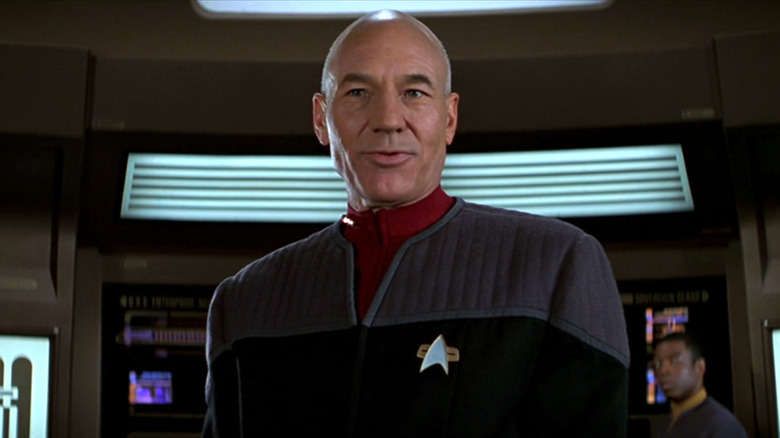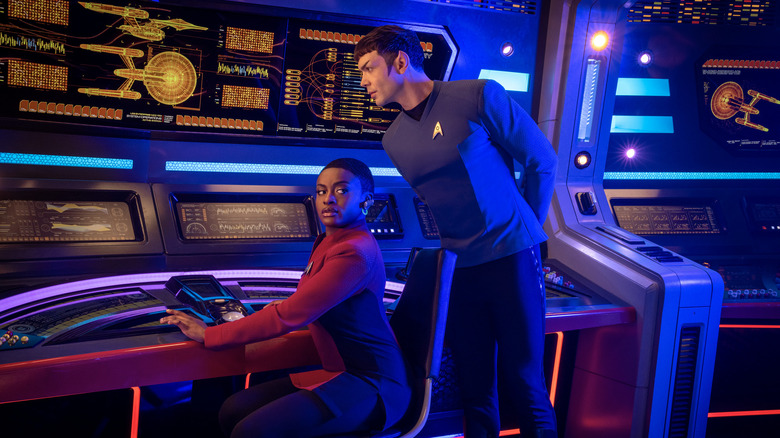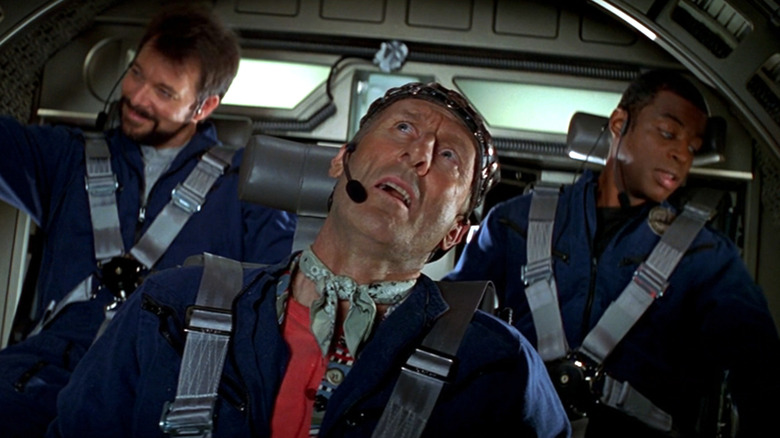Star Trek: How Fast Is Warp Speed Exactly?
"Star Trek" fans are well accustomed to hearing Starfleet captains give the order to travel at maximum warp, but what, exactly, does that mean? The intergalactic storytelling in the "Star Trek" franchise is enabled by the futuristic invention of faster-than-light travel, with starships able to cross impossibly vast distances of space in the time it takes for a commercial break. But for fans who've wondered how fast warp speed actually is, things start out relatively (pun intended) simple. The way warp works is the complex part.
Basic warp speed, also referred to as warp 1, is exactly the speed of light. That's approximately 300,000 kilometers per second. Anything below that speed is described on board a Starfleet vessel as a fractional. But the scale isn't linear, which makes things tricker to calculate at any speed other than a flat warp 1. The best scale to use is the one from "Star Trek: The Next Generation," by which point there was an actual mathematical formula in use to calculate warp speeds. By that scale, a warp factor of 0.5 is only about one-tenth the speed of light, while warp 5 is 213.7 times faster than light.
As seen in many "Star Trek" episodes, the laws of space-time start to break down entirely once warp 10 is reached. Warp 10 gets defined as infinite speed, which means anything traveling at it would occupy all points in space at the same time. Even in science fiction, there must be a limit somewhere.
The science of Star Trek's warp speed
Faster-than-light travel isn't possible with current technology, and may not be possible at all. The speed of light, 300,000 kilometers per second, is thought to function as a sort of "cosmic speed limit." Nothing with mass can travel at that speed or faster, with light being the exception since it has no weight. As Einstein proved, this simple rule holds the fabric of space and time together. So how does the warp drive in "Star Trek" circumvent this apparent law of nature?
As astrophysicist Erin MacDonald explained on the Star Trek YouTube channel, "Just because nothing can travel faster than the speed of light on the surface of space-time, nothing says that space-time itself can't go faster than the speed of light." But how does a warp engine use that loophole in the laws of physics to accomplish FTL travel? By generating a field of energy that warps the space-time around a starship. Said MacDonald, "The idea with warp drive is that you build a bubble of space-time around your ship and then that propels you faster than the speed of light." These bubbles are called warp fields.
This is also how different warp factors can be achieved. A single warp field causes a starship to travel at warp 1, but adding an additional bubble around the first causes even more acceleration — warp 2, 3, and so on. "Eventually, you get to the point where you wrap all of space and time around your ship, and that, you can think of as warp factor 10," MacDonald said.
The history of Star Trek's warp drive
The invention of warp technology is well-documented in "Star Trek" lore. In the franchise's fictional history, Earth went through a dark period between the late 1900s and mid-21st century. First, the Eugenics Wars ravaged the planet, though its dates have been retconned. Next, starting in the early to mid-2020s, World War III broke out following a period of economic collapse. We see the beginnings of this during "Star Trek: Picard" Season 2. But in the post-atomic wastelands of the period that followed, a scientist named Zefram Cochrane managed to engineer the first warp-capable ship.
The movie "Star Trek: First Contact" tells the story of what happened next. Visited by Captain Picard (Patrick Stewart) and the crew of the Enterprise after they travel through a temporal vortex created by the Borg, Cochrane finishes his work on the warp drive. On April 5, 2063, he takes it on a maiden voyage. This triggers the attention of nearby Vulcans, who, realizing a new species has become interplanetary, visit Earth to introduce themselves to humanity.
In the "Star Trek" universe, April 5 is celebrated across the Federation as First Contact Day, and many fans join in on the fun in real life by honoring the holiday. More than a time to celebrate "Star Trek," it's a day to celebrate what the franchise represents: the hope for a future where humanity warps past our petty quarrels to unite with a shared sense of curiosity and exploration.


